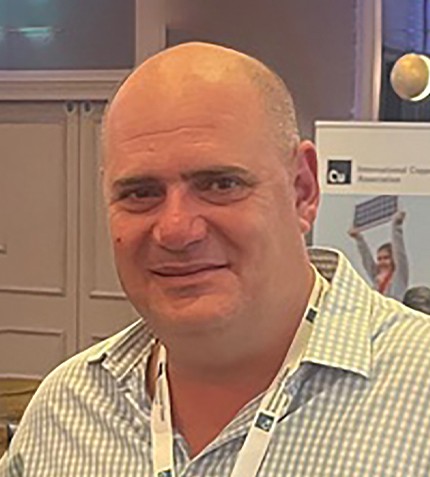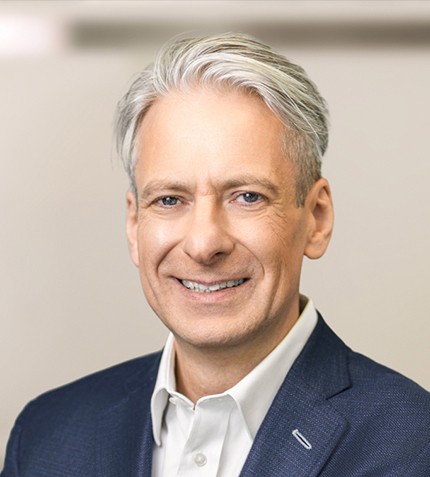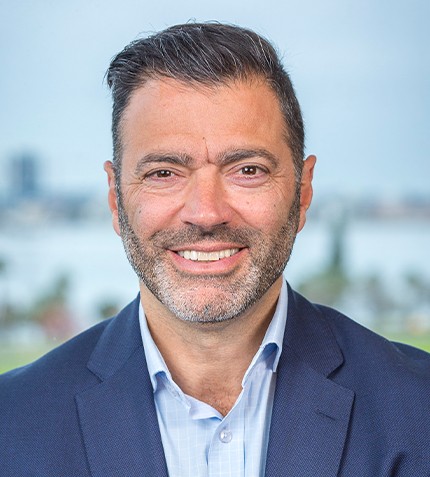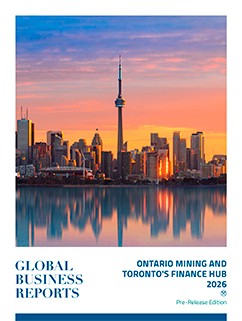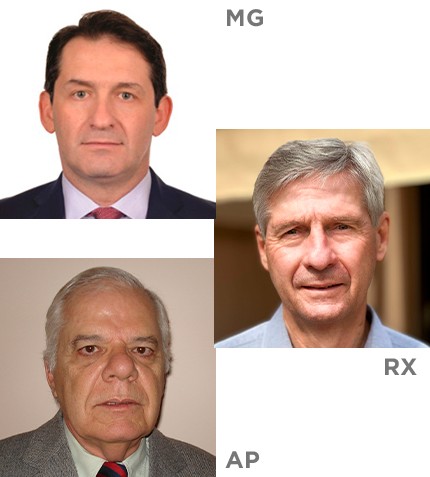
"Our new biannual mandate starts with a focus on maximizing the opportunities related to the energy transition, as well as leveraging the professional development and technologies that will shape the mining industry."
Marcos André Gonçalves, Roberto Perez Xavier, Augusto C. B. Pires
PRESIDENT (MG), EXECUTIVE DIRECTOR (RX) AND PROJECT MANAGER (AP), ADIMB
Can you update us on ADIMB’s activities and recent news?
RX: Since the second half of 2023, ADIMB has been working on four long-term collaborative research, development and innovation (R&D&I) projects supported by mineral exploration and mining companies in partnership with multi-institutional academic research groups and government research centers. ADIMB was again present at PDAC 2024 in Toronto, as the organizer of the Brazilian delegation. This year, our delegation was the largest ever, with over 120 professionals, including core government personnel and CEOs from mineral exploration and mining companies currently in Brazil. We also organized the XI Brazilian Symposium on Mineral Exploration (SIMEXMIN) held on May 19 – 23, 2024, in Ouro Preto, with the slogan ‘Mapping new horizons for the low-carbon energy transition’. Over 1,600 professionals attended technical sessions and panels, keynote presentations, exhibitor booths, short courses, and business meetings.
How does ADIMB promote the scientific and technical development of the mining industry?
RX: Collaborative R&D&I projects led by ADIMB have been very positive in attending to the geological and technological demands raised in early and late-stage exploration projects. Three of these projects have the sponsorship of VALE, Oz Minerals/BHP, and Centaurus, focused on copper-gold-nickel and iron deposits of the well-endowed Carajás (northern Brazil) and Quadrilátero Ferrífero (southeast Brazil) regions. More recently, a three-year R&D&I project was kicked off by Meteoric Resources. This project is being developed on regolith-hosted rare earth element deposits, formed by intense weathering of alkaline rocks from a paleo volcano in the city of Poços de Caldas. These projects help us understand the significant regional and deposit-scale ore-forming geological processes and propose new exploration tools that may convey better efficiency in assessing the company´s exploration targets. Training has been another critical activity which has brought positive results to the mining workforce in Brazil. ADIMB has organized several short courses based on the mineral industry’s demands, in particular, related to geology and exploration of critical minerals and metals deposits. Another capacity-building benchmark led by ADIMB is the launch of the MBA in Management of Mineral Resources in partnership with IBMEC, a prestigious higher education institution in Brazil.
Can you provide an assessment of significant developments in Brazil’s mining sector?
MG: There are several new developments in the mineral exploration scene for rare earth, lithium, and base metals. Various new exploration projects have come to fruition, specifically in the Jequitinhonha region and the northeast. There are positive M&A signs. The energy transition has influenced the mining sector for good, with new exploration investments from Australian, Canadian and American companies.
Can you discuss the main challenges faced across Brazil’s mining value chain?
AP: Integrating innovative technologies into mining operations and strengthening environmental and safety regulations are among the major challenges. Brazil is a global player in the production of commodities and has great potential for discovering new deposits. Exploring for deeper deposits in geologically complex settings requires the integration of conventional methods with modern technologies such as automation, AI, and Big Data, improving productivity and efficiency. From an economic standpoint, mining projects require significant upfront capital investments, particularly mid-tier and junior companies that generally seek capital in stock exchanges abroad. It would be advantageous if this capitalization could be done via investment funds in Brazil, as with the recent launch of the Strategic Minerals Investment Fund by the Brazilian Development Bank. Many mines are in remote regions with inadequate road or railroad networks and reliable and affordable energy supply. In the regulatory space, delays in the permitting process and frequent changes in mining laws and regulations have been roadblocks to the development of new projects. and discouraging long-term investments. We want to maintain continuous and robust ESG strategies to strengthen the bond between the industry and local communities that are economically dependent on mining. Providing adequate employment opportunities and training for local populations is crucial to ensure that mining benefits are widely shared.
What are ADIMB’s priorities for 2024/2025?
MG: Our new biannual mandate starts with a focus on capturing and maximizing the opportunities related to the energy transition, as well as leveraging the professional development and technologies that will shape the mining industry.





